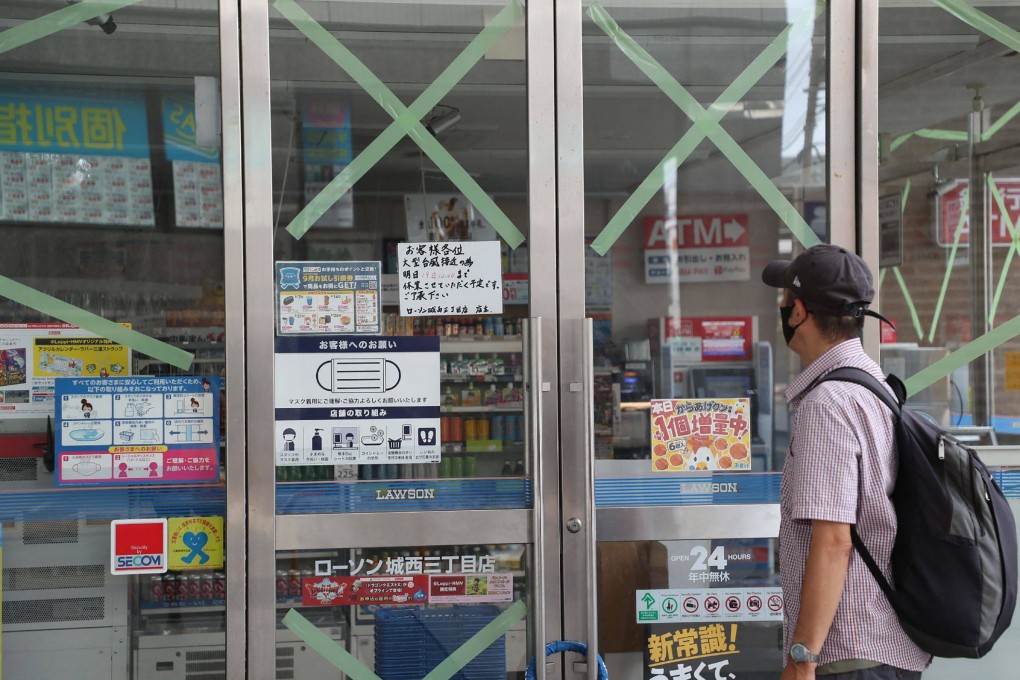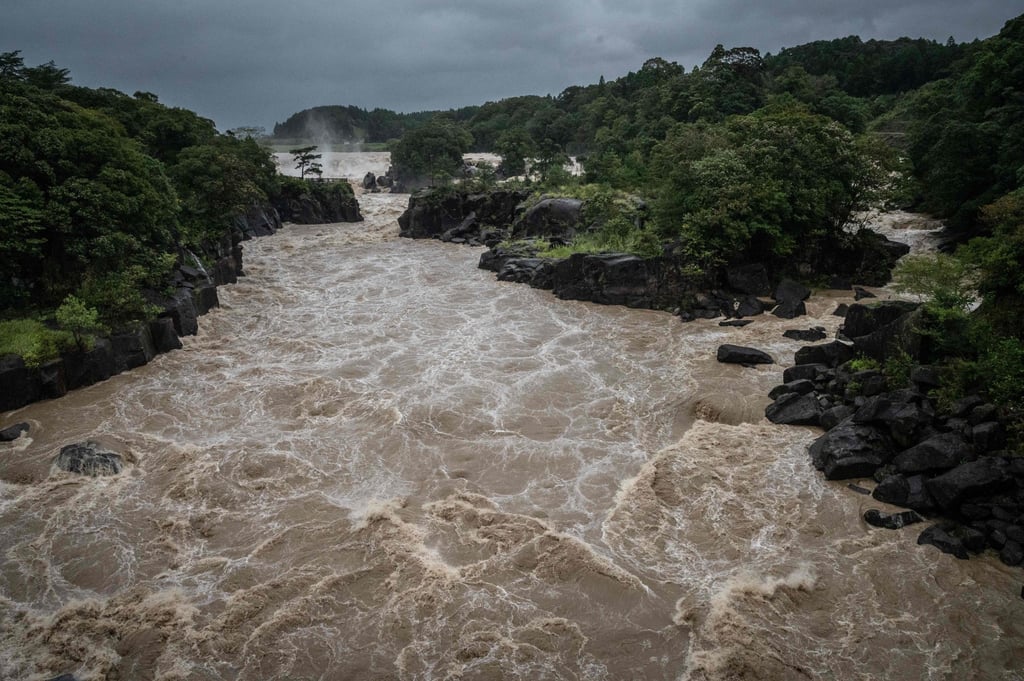At least 2 killed and 260,000 left without power after Typhoon Nanmadol batters Japan
- Nanmadol is the 14th and largest storm in this year’s typhoon season so far. It is also the 5th strongest storm to hit Japan since records began
- Over 9.5 million people were asked to evacuate as early as Saturday as the storm approached Kyushu, bringing torrential rain and surges

Kyodo News said at least two people had been killed. About 260,000 homes were left without power around noon on Monday in Kyushu, according to a website of Kyushu Electric Power Transmission & Distribution.

Prime Minister Fumio Kishida is expected to delay a planned trip to New York for a session of the United Nations General Assembly by about a day, and is looking to depart Tuesday morning after assessing the damage situation.
The Japan Meteorological Agency has reported gusts of wind as strong as 234km/h and sustained winds of around 150km/h. The storm is the most powerful recorded in the world so far this year and the fifth-strongest to make landfall in Japan since accurate records first began.
Residents of low-lying and coastal areas of Kyushu, which has a population of around 13 million, were instructed to evacuate to emergency shelters at higher elevations and to take cover in sturdy buildings, with the authorities warning that traditional wooden homes may not withstand the elements.
In addition to the high waves that have been battering coastal communities, rivers swollen by rainfall have become raging torrents and flooded towns and villages on their banks.
